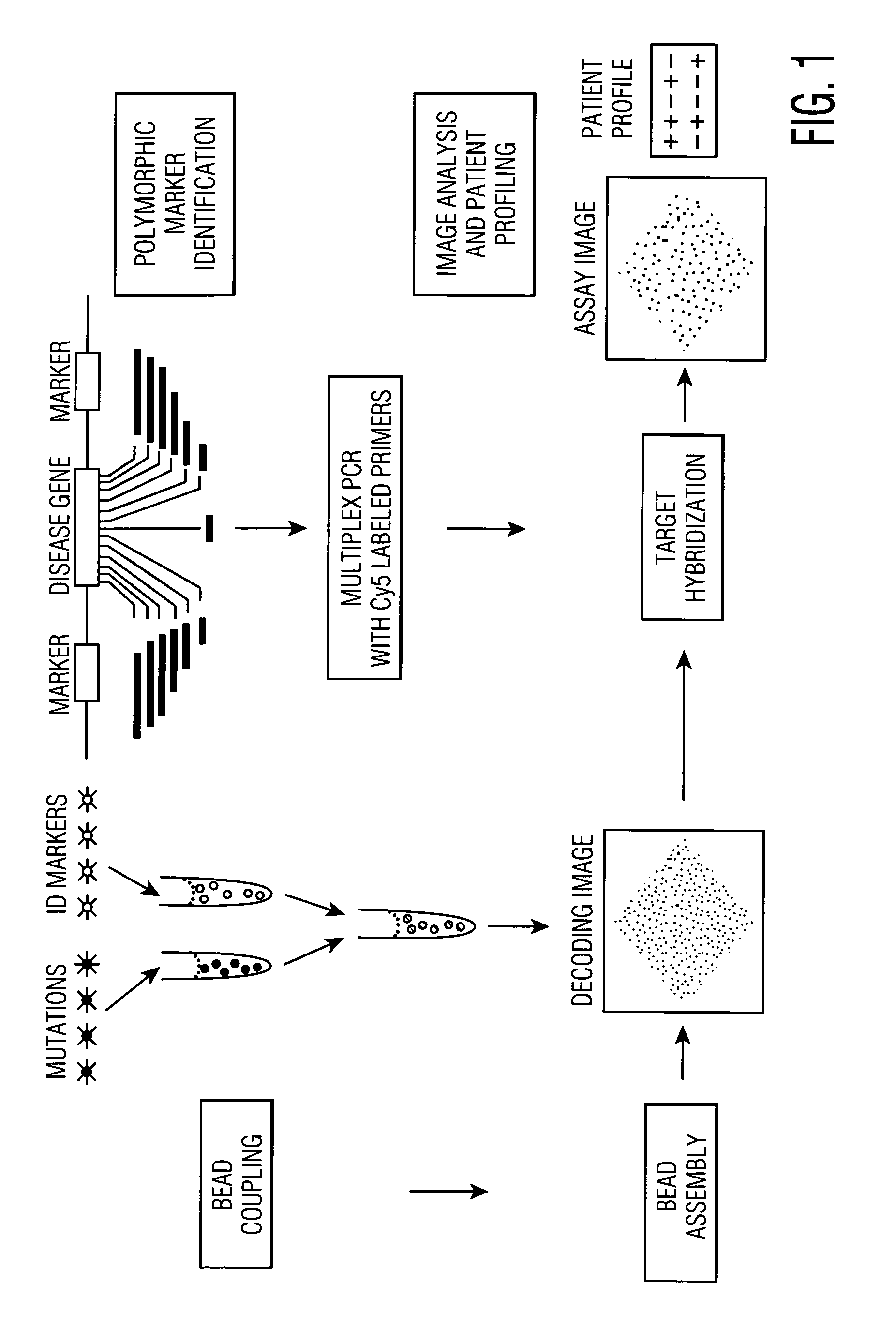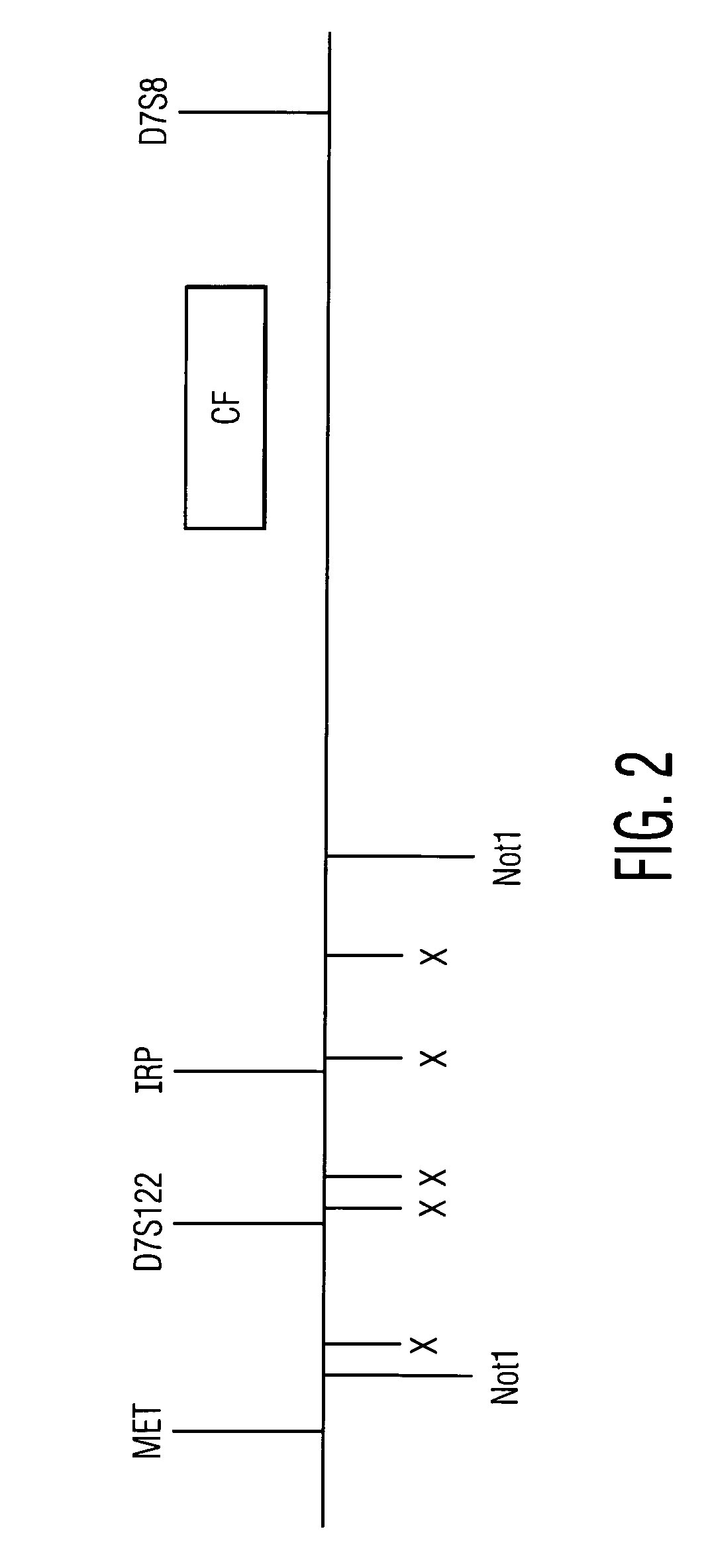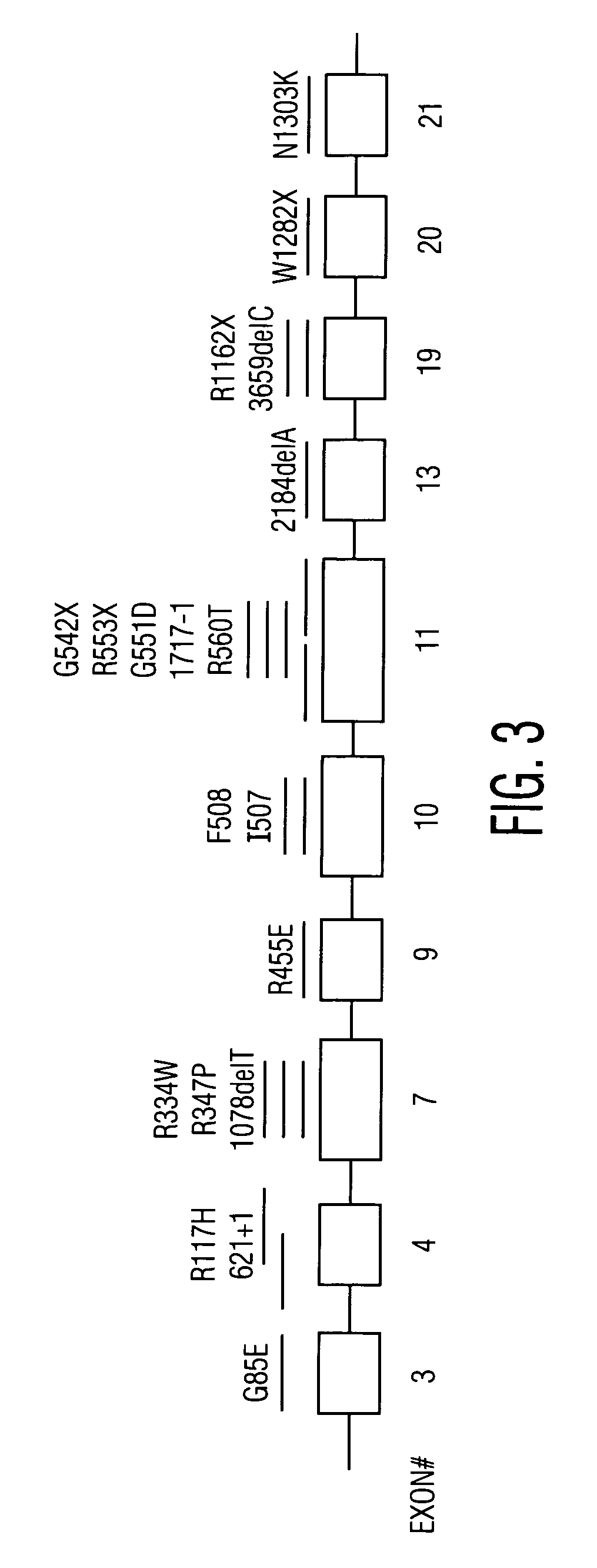Genetic analysis and authentication
a gene and gene technology, applied in the field of gene analysis and authentication, can solve the problems of correlated risk of different types of cancer, high risk of developing brain tumors or leukemia, and dna typing based on the standard laboratory method requires extensive sample preparation and significant post-pcr processing, so as to achieve high discrimination, high signal level, and high stability of hybridization complex
- Summary
- Abstract
- Description
- Claims
- Application Information
AI Technical Summary
Benefits of technology
Problems solved by technology
Method used
Image
Examples
example 1
Cystic Fibrosis Mutation Profile with Embedded Genetic Fingerprint
[0121]In this Example, the analysis of mutations in the CFTR gene was performed so as to produce a genetic profile with an embedded panel of genetic identifiers as internal markers (FIG. 1). Most CF mutations of interest are located on exons 3 to 21 (FIG. 2 and Table 1). Given that the frequency of polymorphic markers within the CFTR gene does not differ significantly for CF patients as compared to the total population, the interrogation of these markers will not produce bias in the analysis of mutant versus normal chromosomes.
[0122]The choice of suitable primers ensures that sequence polymorphisms located within the CFTR gene are simultaneously amplified along with designated mutations to be probed by subsequent hybridization. In a preferred embodiment involving an array composed of encoded beads, one set of beads is modified with probes that are complementary to the CFTR mutations of interest and a second set of bea...
example 2
Duchenne Muscular Dystrophy Mutation Profile with Embedded Genetic Fingerprint
[0129]This Example illustrates the design of a genetic ID for Duchenne muscular dystrophy (DMD), an X-linked recessive trait mostly occurring in males that is characterized by progressive loss of muscle strength. Although DMD protein (dystrophin) analysis of muscle provides an accurate diagnostic test, it is invasive and carries high cost and risk. Further, because the protein is not expressed in amniotic fluid or in chorionic villus tissue, the protein test is not suitable for prenatal diagnosis. On the other hand, the DMD gene has been cloned and several deletions have been identified (FIG. 7), with Southern blots requiring hybridization with ten cDNA probes. (Kunkel, et al, Nature, 322:73–77 (1986)).
[0130]A multiplex PCR protocol has been described for the simultaneous analysis of these gene deletions. (Monaco et al, Nature, 323:646–650 (1986)). An intrinsic genetic ID can be derived from a set of sever...
example 3
Matching Genetic Profiles to Genetic Fingerprint Records
[0131]Given a genetic fingerprint recorded by known methods of DNA fingerprinting, such as, for example, the methods used as part of neonatal testing or those applied to entire selected populations (e.g., members of the defense forces or prison inmates), the methods of the present invention provide a means for authenticating the genetic fingerprint concurrently with genetic testing. For example, markers, such as STRs, that are recorded for paternity and forensic analysis could be used. In addition, markers derived from SNP genotyping or haplotyping could be used. Consequently, a genetic profile with embedded genetic ID would be unambiguously linked to a specific patient record by way of matching genetic IDs. For example, a person's genetic fingerprint may be recorded in a database along with other genetic data according to the methods of this invention. If an individual is then subjected to a subsequent genetic test (for exampl...
PUM
| Property | Measurement | Unit |
|---|---|---|
| pH | aaaaa | aaaaa |
| temperatures | aaaaa | aaaaa |
| temperatures | aaaaa | aaaaa |
Abstract
Description
Claims
Application Information
 Login to View More
Login to View More - R&D
- Intellectual Property
- Life Sciences
- Materials
- Tech Scout
- Unparalleled Data Quality
- Higher Quality Content
- 60% Fewer Hallucinations
Browse by: Latest US Patents, China's latest patents, Technical Efficacy Thesaurus, Application Domain, Technology Topic, Popular Technical Reports.
© 2025 PatSnap. All rights reserved.Legal|Privacy policy|Modern Slavery Act Transparency Statement|Sitemap|About US| Contact US: help@patsnap.com



